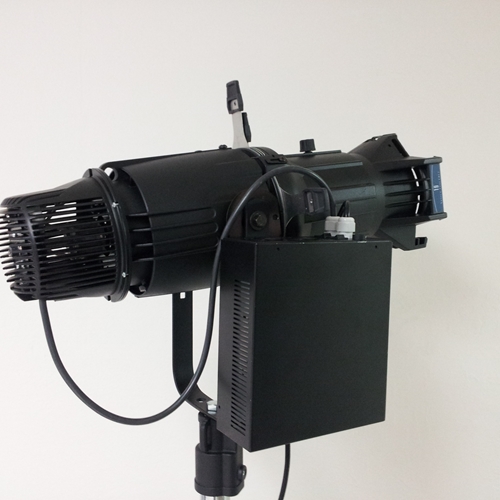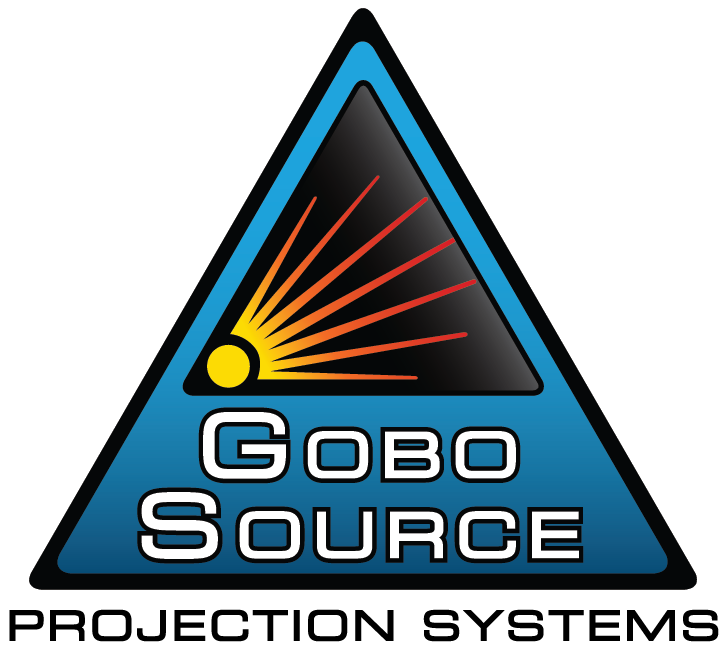
Many customers must purchase a gobo image projector when they order a custom gobo from Gobosource.com, and if they've never bought lighting products they may not understand what the difference is between each model. In this article we'd like to talk about the difference between the two main projection technologies that we offer: light-emitting diode (LED) and discharge bulbs.
Discharge bulbs have been used for decades and are hard to beat in terms of brightness and projection strength. Simply put, for projects where you need to display your gobo from great distances, discharge bulbs are your main option. "For such applications, we designed the ECO Spot 2500 Large Scale Projector, which is unrivaled in price and performance for customers who are trying to produce the most vibrant projections on massive building facades and similar projects.
However, customers that can get away with projection from shorter distances may want to consider LED-based solutions, as discharge lamp systems have a few drawbacks. One of the biggest is heat: The lamps in these projectors become very hot, which means they need to be placed away from other objects that might catch fire. They also use more power than LEDs and have limited bulb life, plus they need time to achieve full brightness and require a cool down period before they can be re-started. If you're concerned about energy usage, heat dissipation and usability, LED projectors are the way to go.
Depending on the model and application, our LED projectors can range of up to about 150 feet in dark ambient light conditions. They also run cool, with minimal electricity usage: Even a relatively powerful projector like the ECO Spot LED80CE is rated for 80 watts, while the ECO Spot 2500 listed above uses 650 watts of power. In short, you'll see very little change in your electricity bill with the former, but a huge increase with the latter.
The choice you make depends a lot on your particular circumstances, so make sure to measure the distances and desired image sizes you'll be projecting over as well as your electricity needs.
